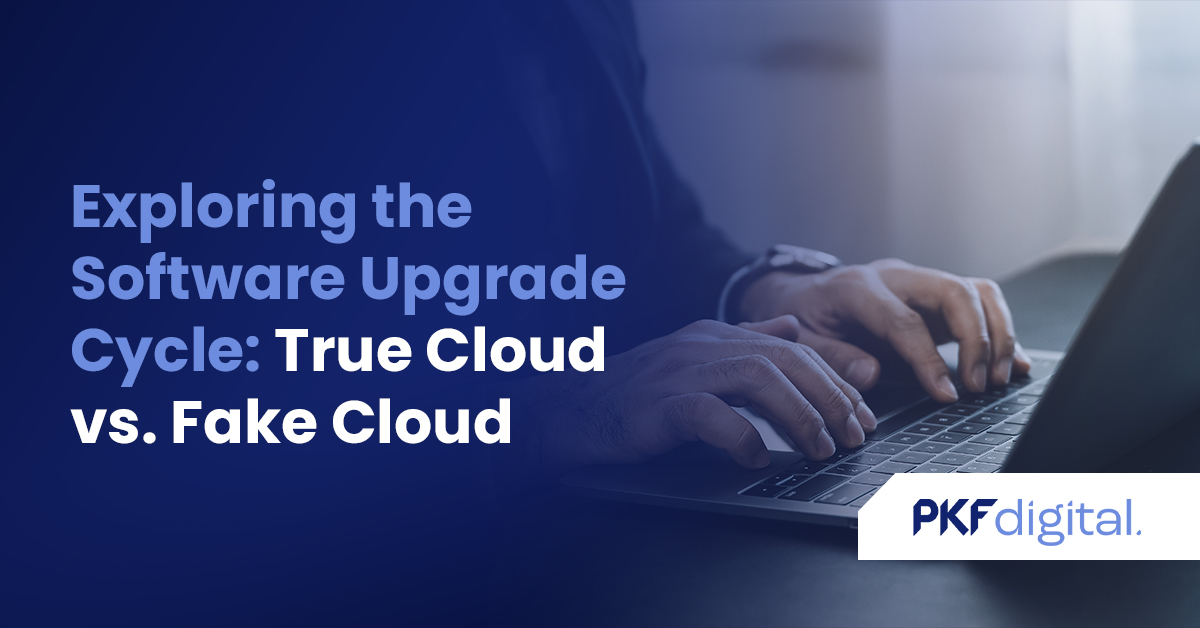It's important to understand the differences between True Cloud and Fake Cloud when it comes to software upgrades. Whilst many software vendors make the claim that their solution is True Cloud, it’s important to delve deeper into the specifics of how they deliver their software upgrades. True Cloud solutions are constantly upgraded and improved in real-time, meaning users can access the latest version of the software with no downtime or lost data. On the other hand, Fake Cloud solutions often require manual intervention for upgrade processes and may not offer enhanced features to their users.
What is True Cloud Software?
When we say "True Cloud", what we really mean is multi-tenanted cloud applications, like NetSuite. True Cloud solutions are architected from the ground up with cloud-based hardware and software infrastructure in mind. In a multi-tenanted environment, all users are operating on the same instance of the software, meaning the code base for all users is exactly the same. This code base can be upgraded at the vendor's discretion and automatically rolls out new features and enhancements, as well as bug fixes, to all users.
Fake Cloud software is what we call "Single Tenanted" software, meaning each client is operating on their own virtual server, which is essentially the same thing as having the software saved locally on a physical server. When it comes time to upgrade, each client will need to work with the vendor to schedule downtime to roll out new features, which can create massive inefficiencies and even halt productivity until the upgrade is complete.
How do you customise the software if everyone is using the same version?
Early pioneers of true cloud software have worked hard to create customisation tools that allow users to tailor the software to their business needs, making solutions like NetSuite even more attractive. True Cloud applications feature on-platform customisation tools meaning each client is able to create their own layers of customisation on top of the core functionality of the software. These customisations are designed to work WITH standard functionality, as opposed to changing the source code of the application to meet the needs of a single user.
The Problem with Upgrading Fake Cloud Solutions
Source-code-level customisations essentially change the way your software operates. This means that every time a new version of the software is released, users will have to contact their vendor to manually update their installation with the latest version of the code. This is not a simple process when clients have created customisations that may not work with new functionality or upgraded functionality.
More often than not, customisations will need to be rigorously tested in a sandbox environment to see how they will interact with the upgraded version of your software, and in the case that they don't work, clients need to decide whether they want to change their customisations, which can be time-consuming and expensive or forego the system upgrade. While this may be convenient in the short term, this approach leads to outdated software that will most likely need to be reimplemented from scratch if clients are wanting to gain access to the latest features and tools.
What can you do if you are currently using Fake Cloud technology?
If you are currently using a Fake Cloud solution, it’s important to evaluate your options. True Cloud technology offers much more flexibility when it comes to software upgrades, as well as more opportunities for customisation. Whilst it may not be ideal, future proofing your ERP strategy with a true cloud solution like NetSuite is going to save your business time, effort and money in the long run. If you'd like to talk to an expert, reach out to PKF Digital's team of true cloud experts. We can help you evaluate your current situation and start you on the path towards true cloud success.


